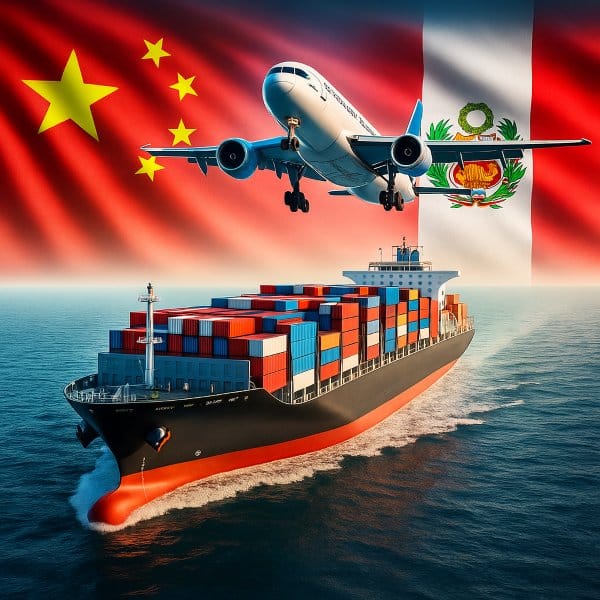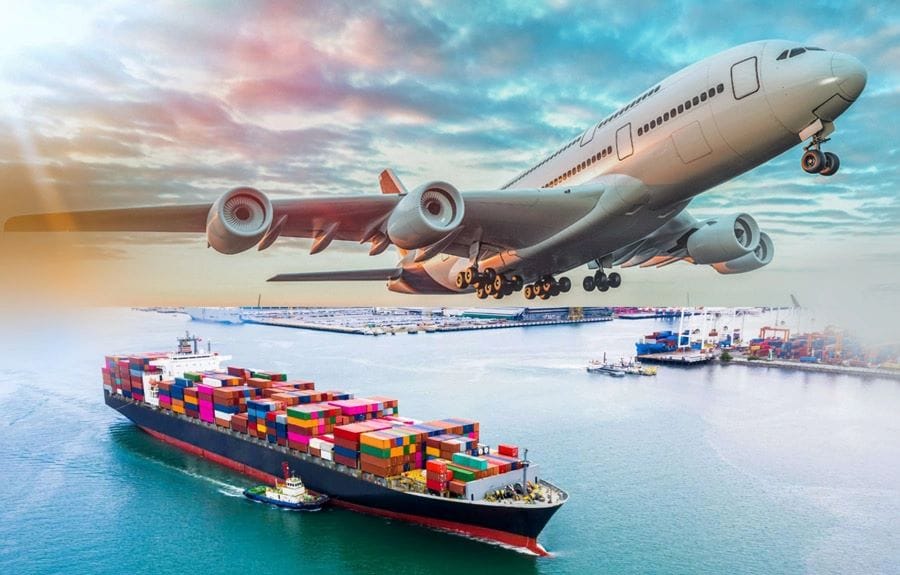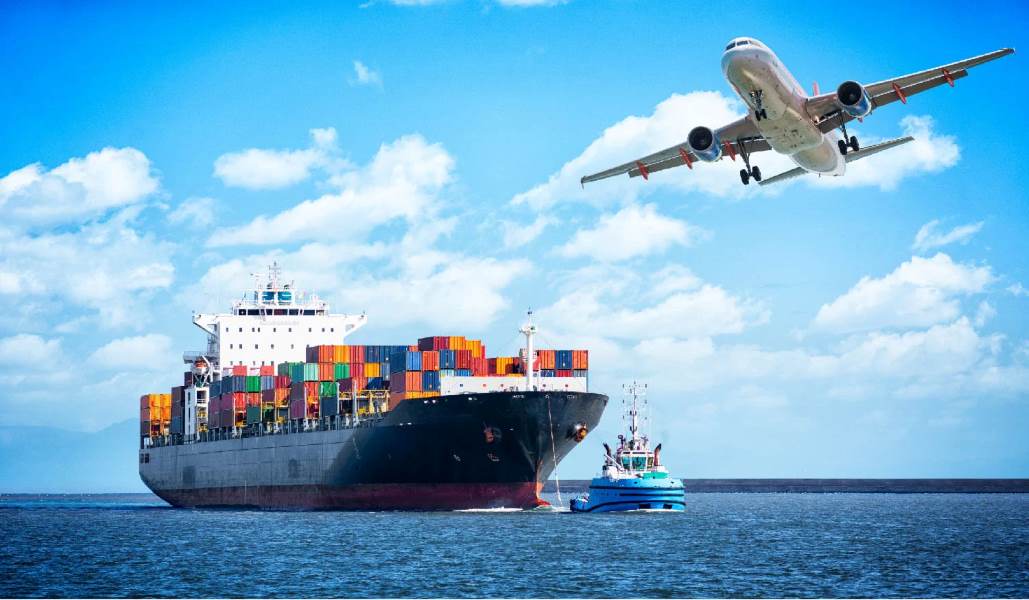As trade ties between China and Latin American countries are increasingly strengthened, Peru, as an important trading partner in South America, has become one of the important destinations for Chinese companies to export. The logistics demand for transporting goods from China to Peru continues to grow. This article will introduce the logistics situation between the two countries in detail.

Geographical Location of Peru
Bilateral trade between China and Peru continues to grow. China is one of Peru’s largest trading partners. It borders Colombia to the north, Brazil to the east, and Chile to the south. Peru’s demand for Chinese products has grown steadily, and cross-border logistics demand has continued to expand. The commodities exported from China to Peru mainly include:
- Machinery and equipment
- Electronic products
- Furniture
- Garments and textiles
- Chemical raw materials and daily necessities
How to Ship from China to Peru
The main modes of transport from China to Peru are sea and air. Different modes of transport are suitable for different types of goods, budgets and time requirements. Choosing the right mode of transport can not only save costs, but also improve the efficiency of cargo distribution.
Sea Freight
Sea Freight is the most cost-effective way to transport bulk goods or large and heavy goods. It has a wide range of global routes and covers almost all major ports in the world. It is especially suitable for ocean routes (such as China to Peru) and supports a variety of cargoes. General cargo, machinery and equipment, dangerous goods, large equipment, etc. can be transported. Large carrying capacity, flexible selection of FCL or LCL according to the goods
Full container transportation service uses 20ft and 40ft containers. For special shipments that require different equipment, such as open top containers, flat rack containers, reefer containers or other equipment,
For small shipments, we offer economical LCL services from China to Peru. LCL rates depend on the volume of your shipment and are charged by weight to ensure a fair pricing model.
Main destination ports
- Callao Port: The largest port in Peru, handling about 90% of the country’s container cargo, with complete facilities, dense routes, modern container terminals and dedicated cargo areas
- Paita Port: An important port in northern Peru, mainly serving the northern region of Peru
- Matarani Port: A major port in southern Peru, serving southern cities such as Cusco and Arequipa
Air Freight
Air Freight is the fastest mode of transportation, suitable for high-value or fragile goods, such as electronic products, clothing samples, and medicines; the procedures are simple and customs clearance is fast. The customs clearance process of air transport is usually more efficient than sea transport, and the cargo volume is limited. It is not suitable for large-scale transportation or oversized goods
Provide safe and reliable solutions to meet all your air transport needs, including time-sensitive and high-value goods. The transportation services provided include airport to airport, door to door, airport to door, and door to airport, etc.
Major airports:
- Lima Jorge Chavez International Airport (LIM): the largest international airport in Peru and the only one with full international cargo capabilities
Factors Affecting Shipping Cost from China to Peru
Transportation costs are affected by the following factors:
Cargo volume and weight
The billable volume or gross weight determines the cost
Departure and destination ports
The cost difference between different ports is obvious
Whether to transit
There are few direct routes, and transit will increase time and cost
Destination surcharge
Such as Peru destination port miscellaneous fees, port congestion surcharge, etc.
Seasonal changes
Freight rates rise significantly during peak transportation seasons such as Christmas and Black Friday
Shipping Cost from China to Peru
In the international transportation between China and Peru, the freight cost is affected by the above multiple factors and is mainly determined by the two modes of transportation: sea and air.
Sea transportation is mainly charged according to the type of service. Full container load (FCL) is charged by container, based on the number of containers and the type of container. Less than container load (LCL) is charged by cargo volume (CBM).
The charging mode of air transportation is charged by kilogram, which is based on the higher of cargo weight and volumetric weight (Volumetric Weight); the volumetric weight formula is usually used: Volumetric Weight (KG) = Length (cm) × Width (cm) × Height (cm) ÷ 6000. There will be slight differences between different airlines, routes, and transshipment points. The specific quotation is subject to the current flight.
It is mainly composed of the following fees:
- Freight: The basic cost of sea or air transportation, usually quoted by the shipping company or airline according to the destination and cargo characteristics
- Document fees: The costs of making bills of lading, declaration documents, export customs declaration documents, etc.
- Customs declaration fees: Customs declaration and agency fees at the export or import place
- THC: Operational costs such as loading and unloading, yard, and weighing at ports or airports
- Destination miscellaneous fees: Including local charges such as unpacking, warehousing, customs clearance, and delivery
- Insurance: (optional) Insurance for cargo, the rate is generally 0.2%-0.5% of the cargo value
- Surcharges: Including peak season surcharge (PSS), fuel surcharge (BAF/FSC), war risk surcharge (WRS), etc.
| Shipping Mode | Description | Cost Estimate |
| LCL (Less than Container Load) | Perfect for smaller shipments, priced by volume | $100-$160 per cubic meter |
| FCL (Full Container Load) – 20-foot | Best for large shipments, budget-friendly | $2,350 – $3,000 per container |
| FCL (Full Container Load) – 40-foot | Ideal for substantial shipments, cost-effective | $4,650 – $5,650 per container |
| Express Shipping | Fastest for small packages | $100-$150 USD for a 5 kg package |
| Air Freight | Quick and efficient, costed by weight/volume | $9.65 per kilogram |
Here are the costs for shipping to other countries:
How Much Does it Cost to Ship from China to Brazil?
How Much Does it Cost to Ship from China to Mexico

Shipping Time from China to Peru
The shipping route from China to Peru spans the entire Pacific Ocean and is an important ocean route connecting Asia-Pacific and South America. It mainly departs from major ports in China and transits through different routes such as the United States, Mexico, and Panama to Peru, which generally takes 28-45 days.
There are no direct flights from China to Peru by air, and it usually needs to transit through international airports in North America or Europe. It usually takes 5-10 days from major airports in China to Peru.
The transportation time is mainly affected by the following factors
- Goods shipment preparation time: factory production cycle, document preparation, and port warehouse arrangements affect overall shipments.
- Whether the route is direct or not: direct flights are fast, while stopovers or transit routes will extend the time.
- Customs clearance efficiency: Peru’s customs clearance process is relatively complicated, and incomplete documents or tax audits will seriously delay shipments.
- Holidays and peak seasons: China’s National Day, Spring Festival, and Christmas will affect port operating efficiency.
- Weather impact: The South Atlantic hurricane season (November to April of the following year) may lead to route adjustments,
| Port of Origin (China) | Port of Destination (Peru) | Air Freight Time | Sea Freight Time |
|---|---|---|---|
| Shanghai | Lima | 4–9 days | 27–44 days |
| Guangzhou | Lima | 5–10 days | 29–43 days |
| Ningbo | Lima | 4–9 days | 30–45 days |
| Shanghai | Arequipa | 6–8 days | 32–42 days |
| Guangzhou | Arequipa | 5–9 days | 28–45 days |
| Ningbo | Arequipa | 5–8 days | 30–45 days |
Learn more about shipping times to other countries below:
How Long Does it Take to Ship from China to Brazil
How Long Does it Take to Ship from China to Mexico
Steps for Shipping from China to Peru
Whether choosing sea or air transport, international transport needs to strictly follow certain operating procedures to ensure that the goods arrive at the destination smoothly, safely and legally. The following are the specific steps of transportation:
Preparation stage
Determine the cargo information, including the name, quantity, weight, volume, whether it is dangerous goods, etc.
Choose a suitable freight forwarder
Communicate the scope of service, quotation, transportation cycle, etc.
Book and arrange airport pick-up
The freight forwarder books space with the shipping company or airline to obtain the ship schedule/flight information.
Domestic pickup/delivery
The factory delivers the goods to the designated warehouse (FOB terms), and the freight forwarder arranges the truck to pick up the goods at the door (EXW terms).
During transportation
During transportation, we provide real-time tracking and monitoring services to let you know the transportation status of the goods throughout the process.
Peru import customs clearance and release
The consignee provides the local tax number (RUC), power of attorney, and import license (if any). Pay customs duties, value-added tax, etc. according to the Peruvian import tax rate
End of delivery or self-pickup
The consignee picks up the goods by himself or entrusts the customs broker to arrange the pick-up.

Import Customs Clearance in Peru
All goods imported into Peru must go through formal customs clearance procedures to ensure compliance with the country’s laws, tariffs and regulatory requirements.
Customs clearance documents:
- Commercial invoice: used for value declaration and tariff calculation
- Packing list: confirms the quantity and packaging of goods
- Bill of lading: proof of collection by sea or air
- Certificate of origin: required if preferential tariffs are enjoyed under the China-Peru Free Trade Agreement
- Importer RUC number: must be a company or individual taxpayer identification number registered in Peru
- Other licenses or certifications: additional licenses or test reports are required for food, medicine, batteries, dangerous goods, etc.
Import tax
- Peru general import tax rate: 0%–11%
- VAT (IGV): 18% (applicable to most goods)
- Certain products enjoy the tariff reduction and exemption policy of the China-Peru FTA and need to submit a certificate of origin (Form FTA)
Why Choose Ubestshipping
Let Ubestshipping be your trusted logistics partner to connect your business from China to Peru in an efficient, professional and careful manner. Here are the reasons for choosing
- Experience in Latin American transportation, understanding Peru’s customs clearance process, language environment and cultural differences
- Can provide door-to-door/DDP services, especially for customers with no import experience
- Provide one-stop service, including customs declaration, warehousing, distribution, labeling, and last-mile delivery
- With a local agent network to ensure smooth customs clearance and delivery
- Transparent quotations, no hidden fees
Transporting goods from China to Peru involves various logistics methods and complex but controllable processes. By choosing the right transportation method, understanding Peru’s import policies, and cooperating with professional freight forwarding companies, you will greatly improve transportation efficiency and reduce costs.
